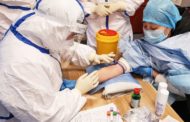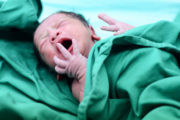By Donah MBABAZI. Photo: Breastfeeding is very important for the first 18 months. (Internet photo)
A research article published last year titled “Prevention of mother-to-child (PMTCT) transmission of HIV: cost-effectiveness of antiretroviral regimens and feeding options in Rwanda” summarizes the progress the country has made in that direction. According to the research, Rwanda’s national PMTCT programme aims to achieve elimination of new HIV infections in children by 2015.
What the experts say
Dr Alphonse Butoyi, an obstetrician at Hopital de lo Croix, says a pregnant mother can transmit the virus to the baby at any stage but the risk is higher during delivery. He says when the membrane gets ruptured; there are secretions in the vagina or blood which the baby may come into contact with hence infection.
“While delivering an HIV-positive mother, we put a barrier between the secretions and the baby to minimize contact and the process must really be done fast,” Dr Butoyi says.
“As soon as the child is born, both the mother and child are given antiretroviral drugs. The baby is also bathed in an antiseptic solution.”
He says in such circumstances, mothers are advised to either breastfeed the children exclusively or give the child artificial milk only.
“You cannot mix the two options. It is either only breast milk or artificial milk not both,” Butoyi warns.
Butoyi further says HIV-positive women should continue taking ARVs even when they conceive but advises them to consult the doctor for advice since some drugs are not good for pregnant women.
“The mother should start treatment early to minimize the chances of infecting the baby,” Butoyi says.
Dr Laurent Munyankindi, the head of gynaecology and obstetrics at Kacyiru Police Hospital, says a child has between 5% and 10% chance of getting HIV while in the womb, and 5% to 20% chance of getting infected during breastfeeding. However, the figures have not stopped doctors from encouraging the practice.
“Initially HIV-positive mothers were advised against breastfeeding for fear of infecting the baby. It was, however, discovered that it was leading to malnutrition among the children and that counsel was dropped. Instead, doctors decided that besides breastfeeding, a baby should be given ARVs right from the time of birth until they clock 18 months of age as a prevention measure,” Dr. Munyankindi says.
“As a way of prevention, the mother is given ARVs from 14 weeks of pregnancy and thereafter. A CRP test is done on the baby after birth to confirm it’s not positive. Another test is done at 6, 9 and 14 months as a follow up,” he adds.
Nathan Mugume, the head of division Rwanda Health Communication Centre, says most babies are born HIV-negative because of the countrywide sensitization campaigns about PMTCT.
World AIDS day
World Aids Day is on December 1 with the theme being “Focus, Partner, Achieve: An AIDS-free Generation.” According to sources, the World Health Organization (WHO) will issue new recommendations to help countries close important gaps in HIV prevention and treatment services.
The guidelines will include advice on providing antiretroviral drugs for people who have been exposed to HIV such as health workers, sex workers and survivors of rape. They also include recommendations on preventing and managing common opportunistic infections and diseases such as severe bacterial and malaria infections and the many oral and skin infections that can affect people living with HIV.
HIV counsellor Chamaine Allen fills out paperwork. Pregnant women should consult doctors and counsellors for advice. (Internet photo)
In 2013, WHO published consolidated guidelines on the use of anti-retrovirals that promote earlier, simple and less toxic interventions to keep people healthier for longer and help prevent HIV transmission. A growing number of countries with a high burden of HIV adopted these guidelines that same year (2013) and 13 million people were able to access life-saving ARVs. However, many people still lack access to comprehensive HIV treatment and prevention services.
The big picture
According to UNICEF, in 2009, 33.3 million people around the world had the human immunedeficiency virus (HIV) that causes AIDS, and 22.5 million of them were living in Sub-Saharan Africa.
In 2009, more than 2.5 million children under the age of 15 were living with HIV, 90% of these cases were due to mother-to-child transmission of HIV during pregnancy, delivery and breastfeeding (UNAIDS 2009).
Each day, 1,500 children worldwide contract HIV, the vast majority of them newborns (UNAIDS 2009)
In Rwanda
Rwanda’s HIV prevalence rate is at 3% (UNAIDS 2008). Over half of all infants born to HIV-positive women received anti-retrovirals in 2008 (UNAIDS 2008).
According to the Ministry of Health, the HIV-free survival rate amongst children aged 9 to24 months born to HIV-positive mothers is 93% if these mothers are accessing treatment and care through the national PMTCT programme.
Key message
According to UNAIDS, halting and reversing the spread of Aids is not only a goal in itself, it is a prerequisite for reaching almost all other millennium development goals. It will impact all efforts to cut poverty and improve nutrition, reduce child mortality and improve maternal health, curb the spread of malaria and TB.
The risk of HIV transmission to infants may be reduced to less than 2% if HIV positive pregnant women receive comprehensive counseling, health care and antiretroviral treatment during pregnancy and through the first six months after child birth, according to statistics.
UNICEF believes that the elimination of mother-to-child transmission of HIV is possible by 2015, this means reducing the MTCT rate to below 5% and the number of children contracting HIV from their mothers by 90%
An HIV-positive mother should be provided with information and skills to select the best feeding option for her baby. She should also receive nutrition or both and her new born and be supported in having her child tested for exposure to HIV.
HIV-positive women and men should be encouraged to have their partners and other children tested and counselled.
This article was originally published on The New Times Rwanda.
Read the original article
Warning: file_get_contents(https://plusone.google.com/_/+1/fastbutton?url=https%3A%2F%2Fkigalihealth.com%2Fworld-aids-day-how-effective-is-pmtct%2F): failed to open stream: HTTP request failed! HTTP/1.0 404 Not Found in /home/kigal4health/public_html/wp-content/themes/goodnews5/goodnews5/framework/functions/posts_share.php on line 151














